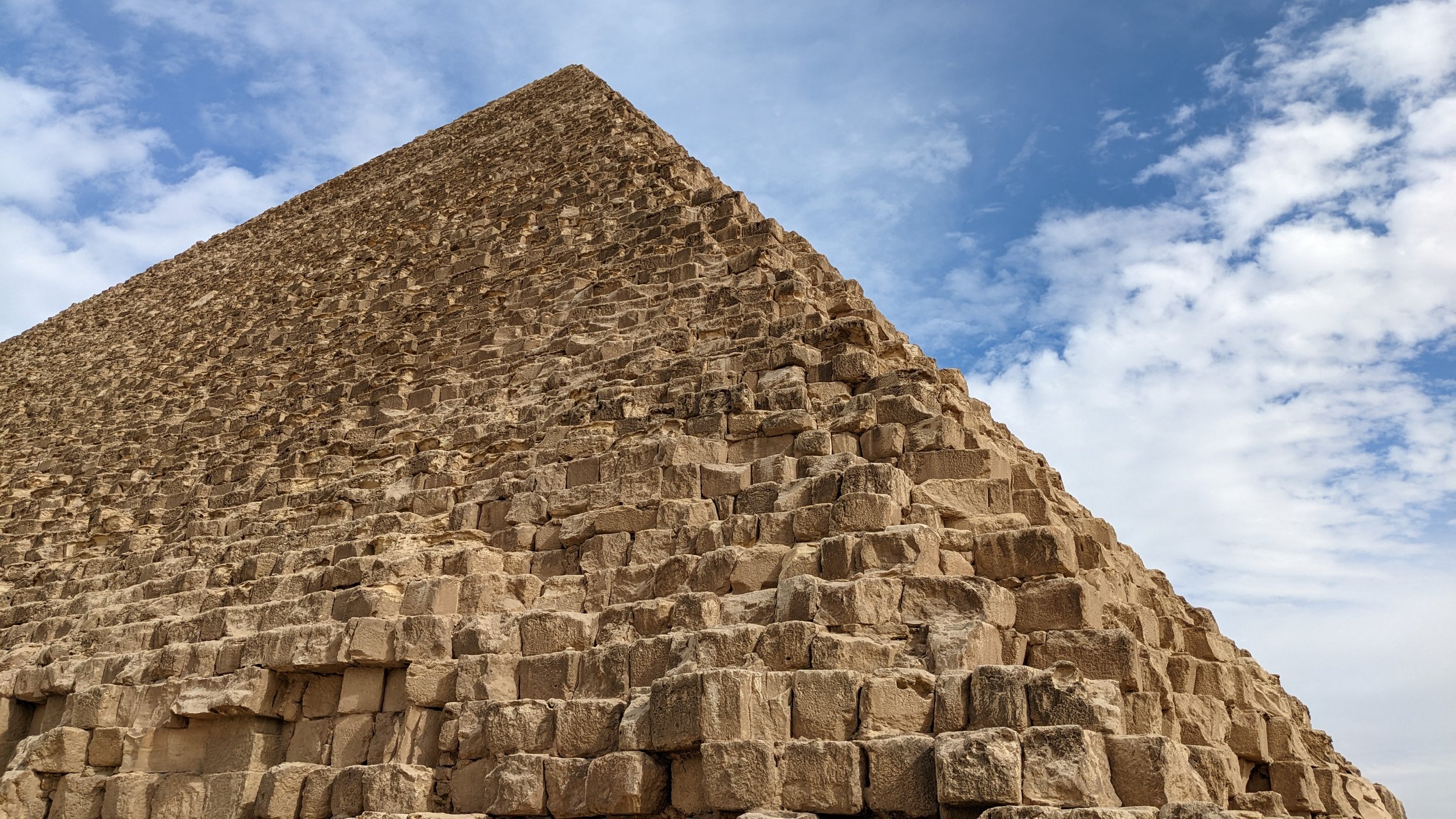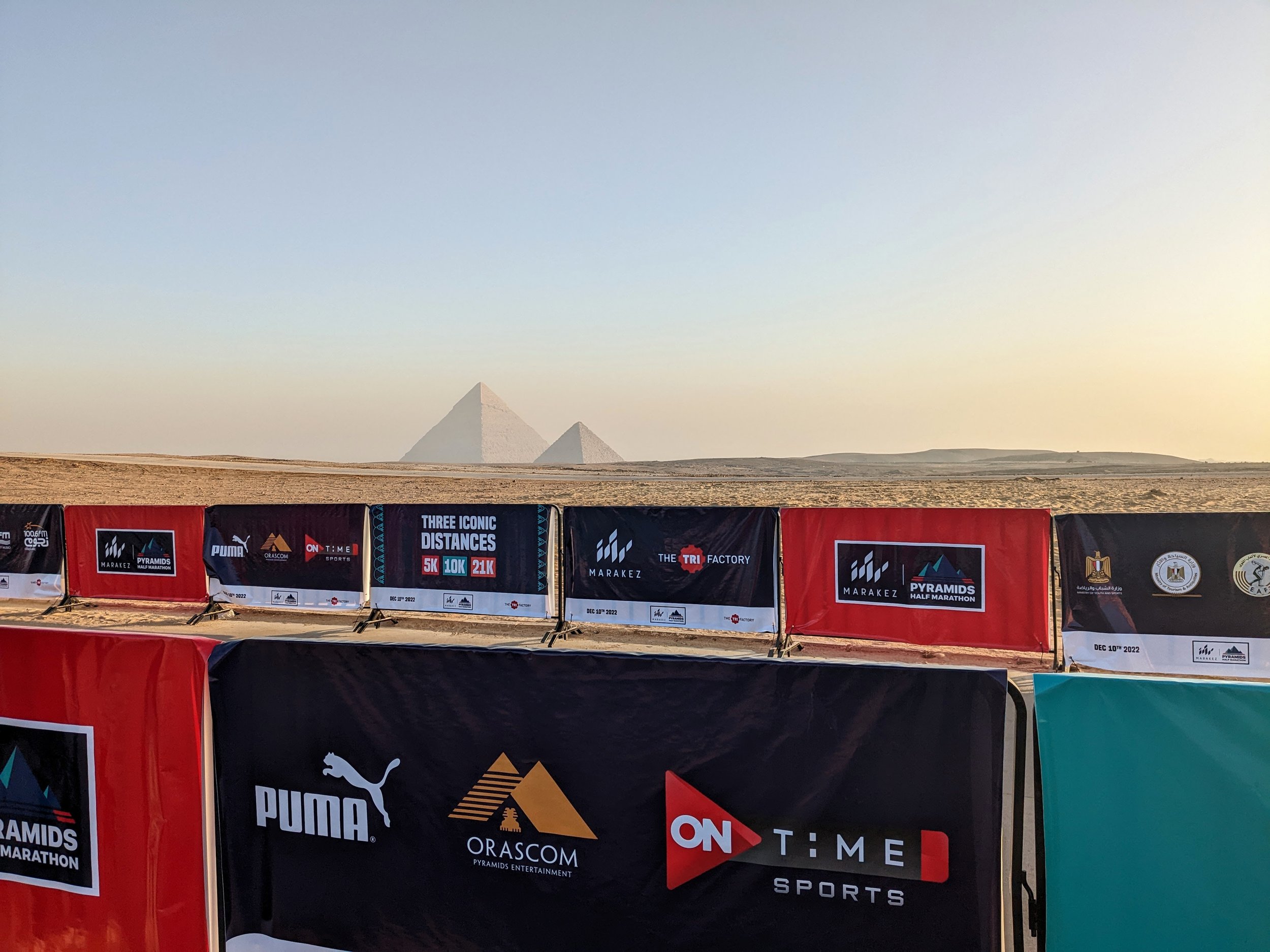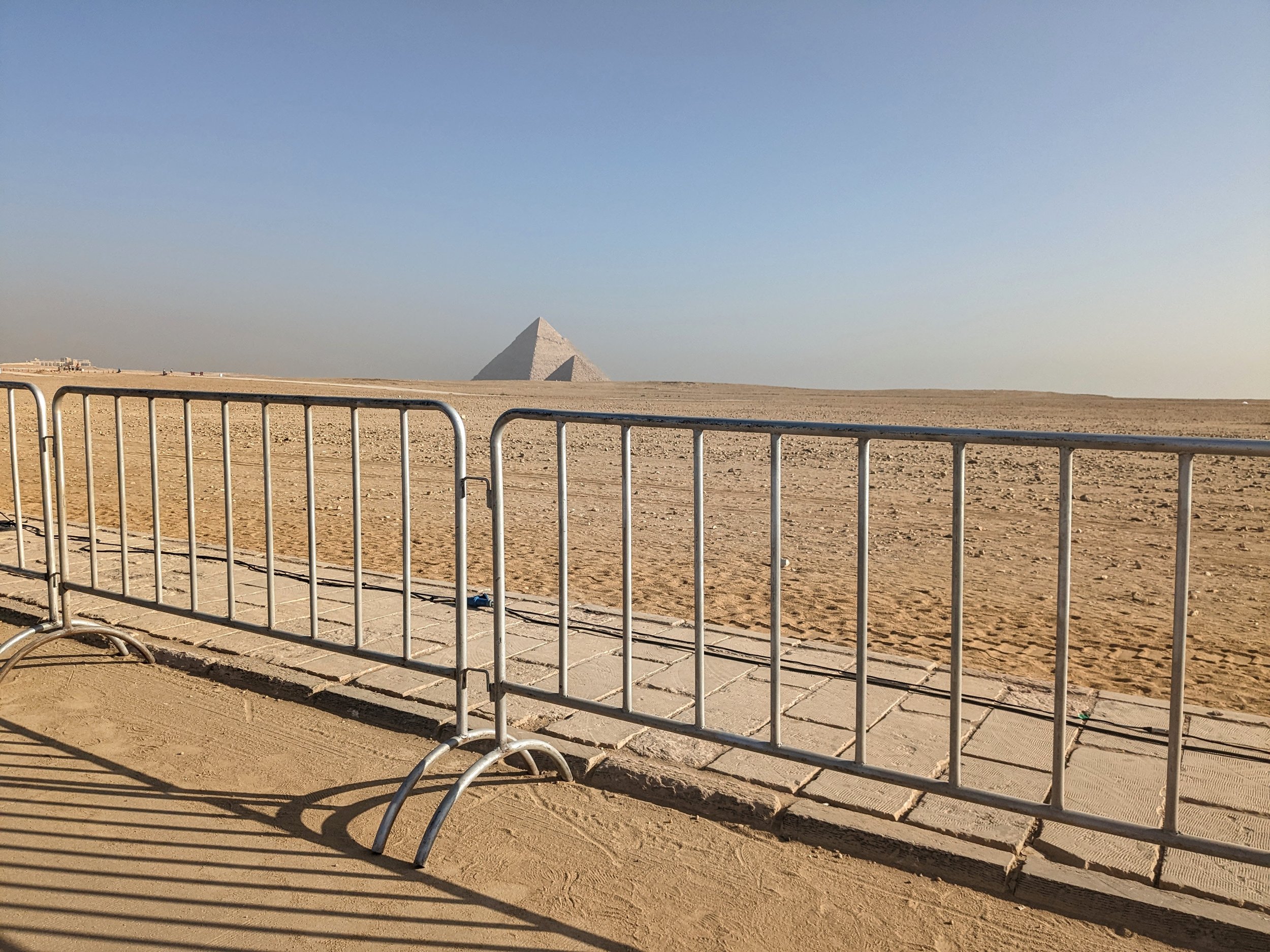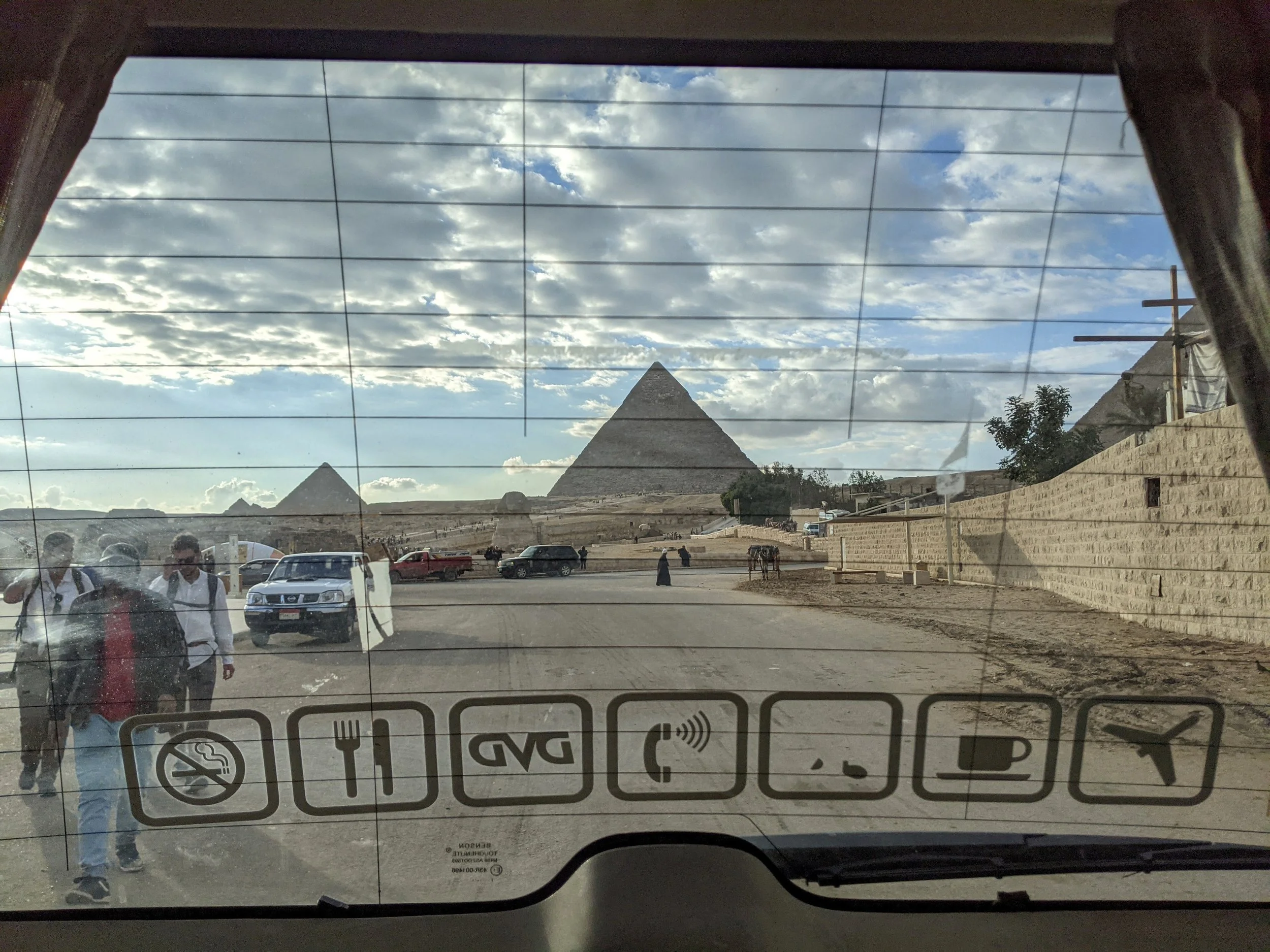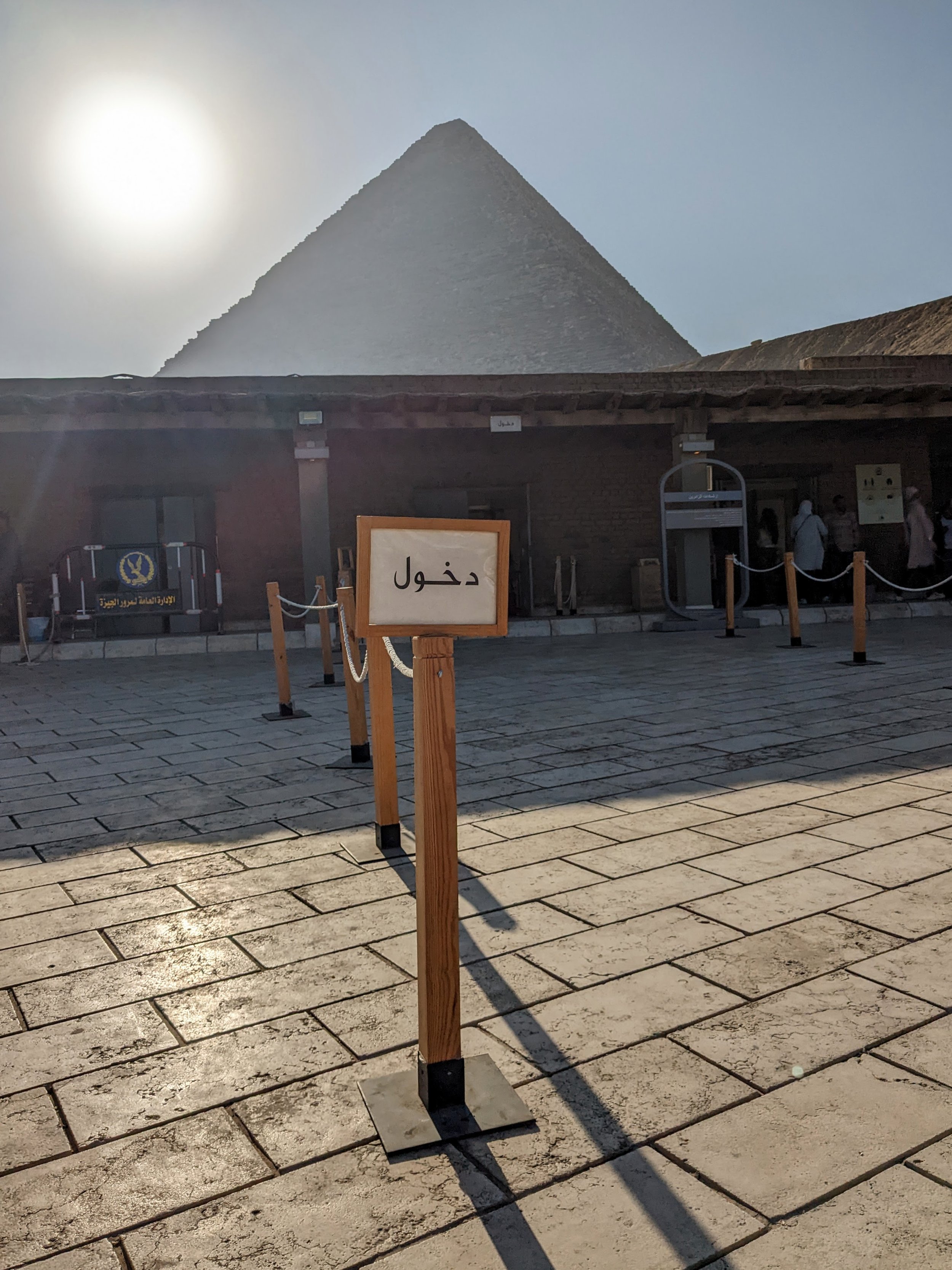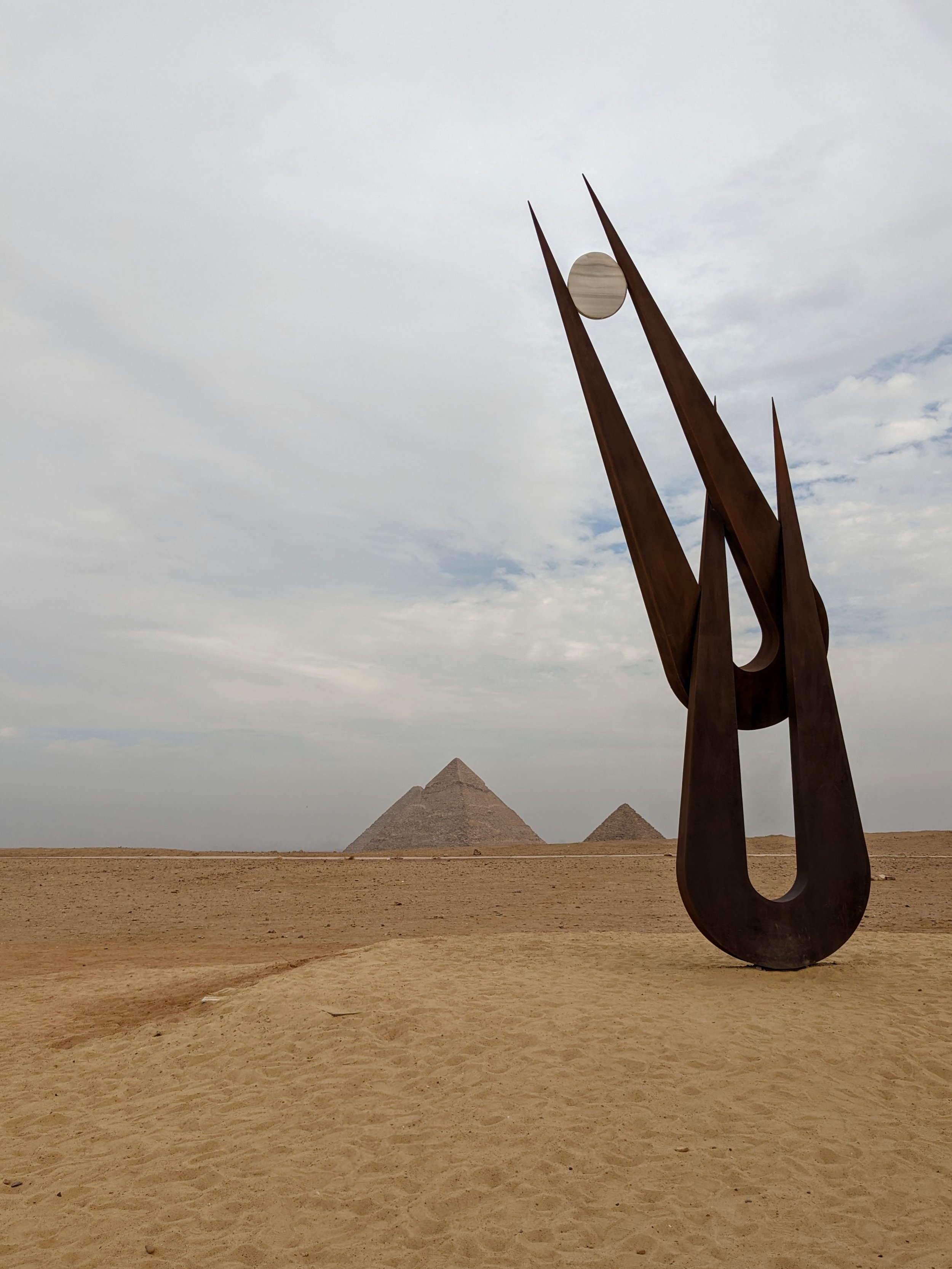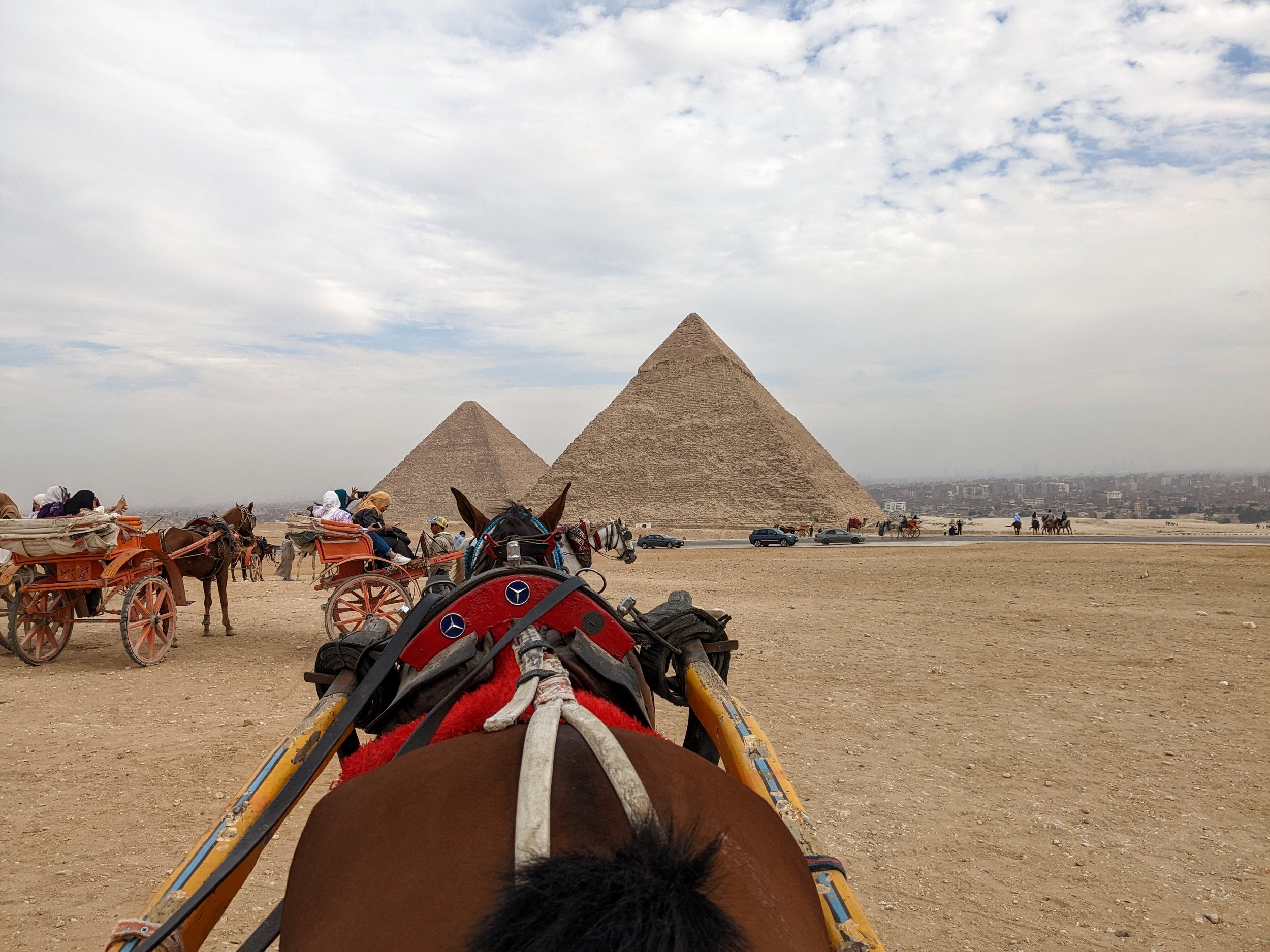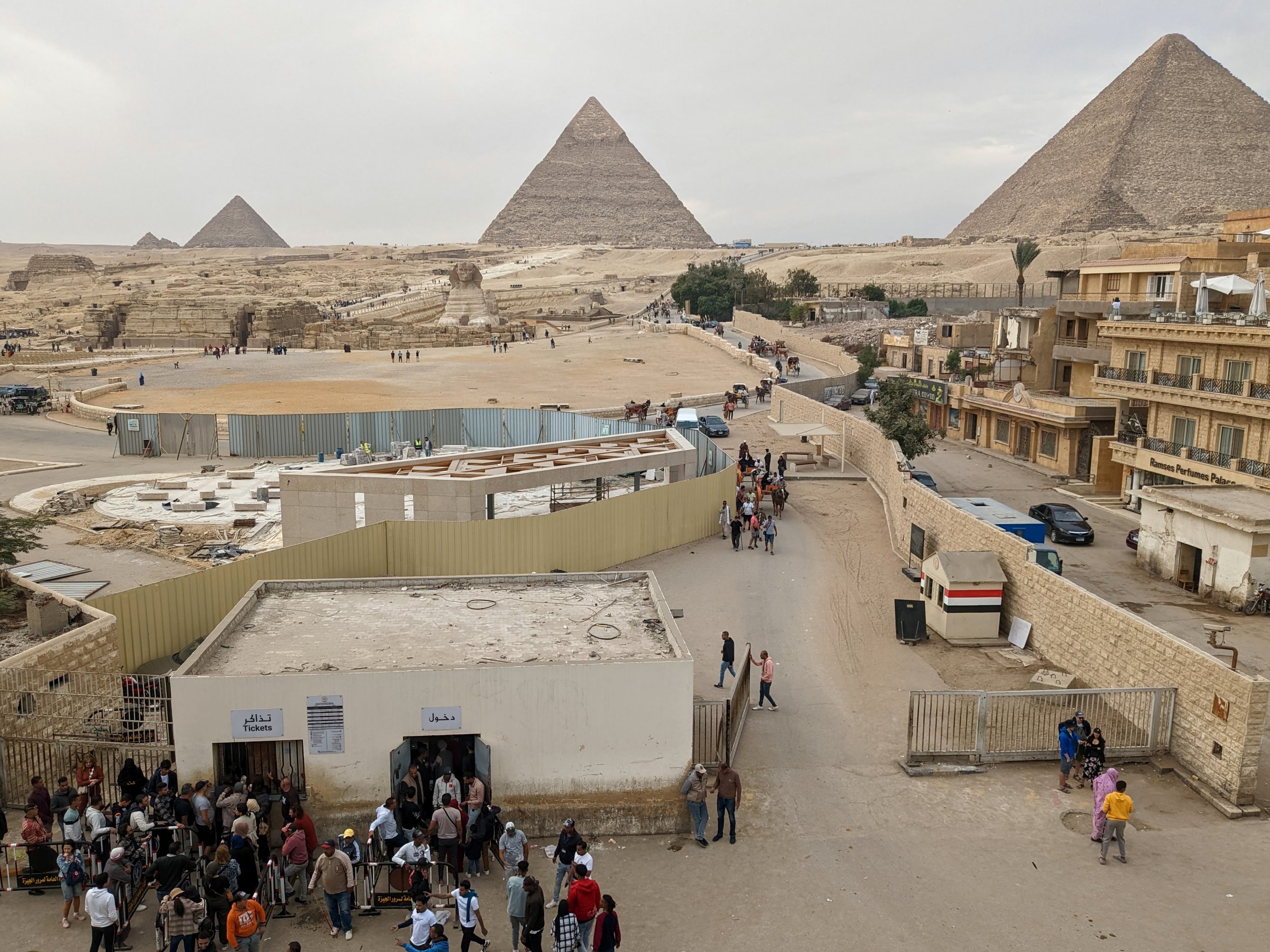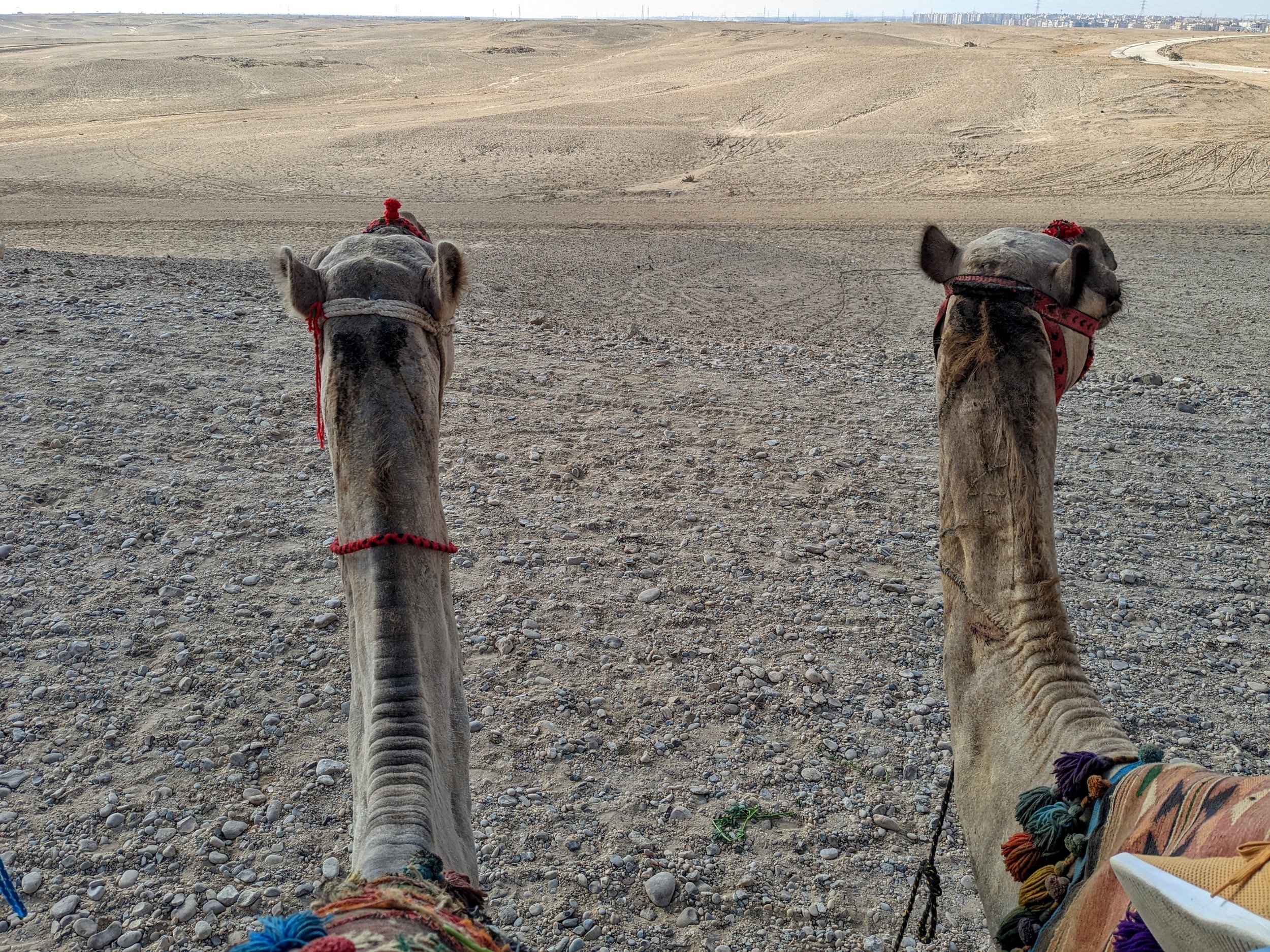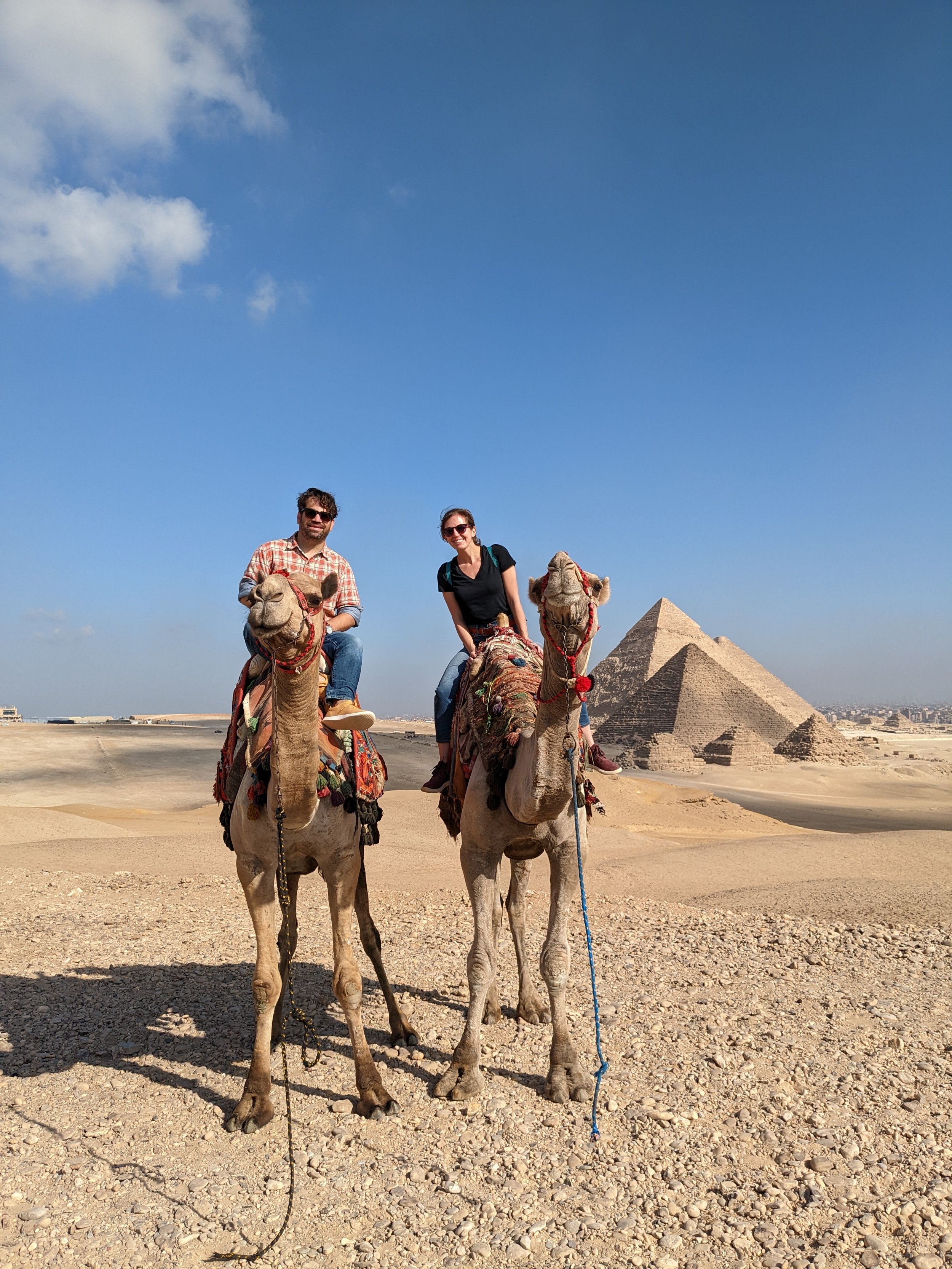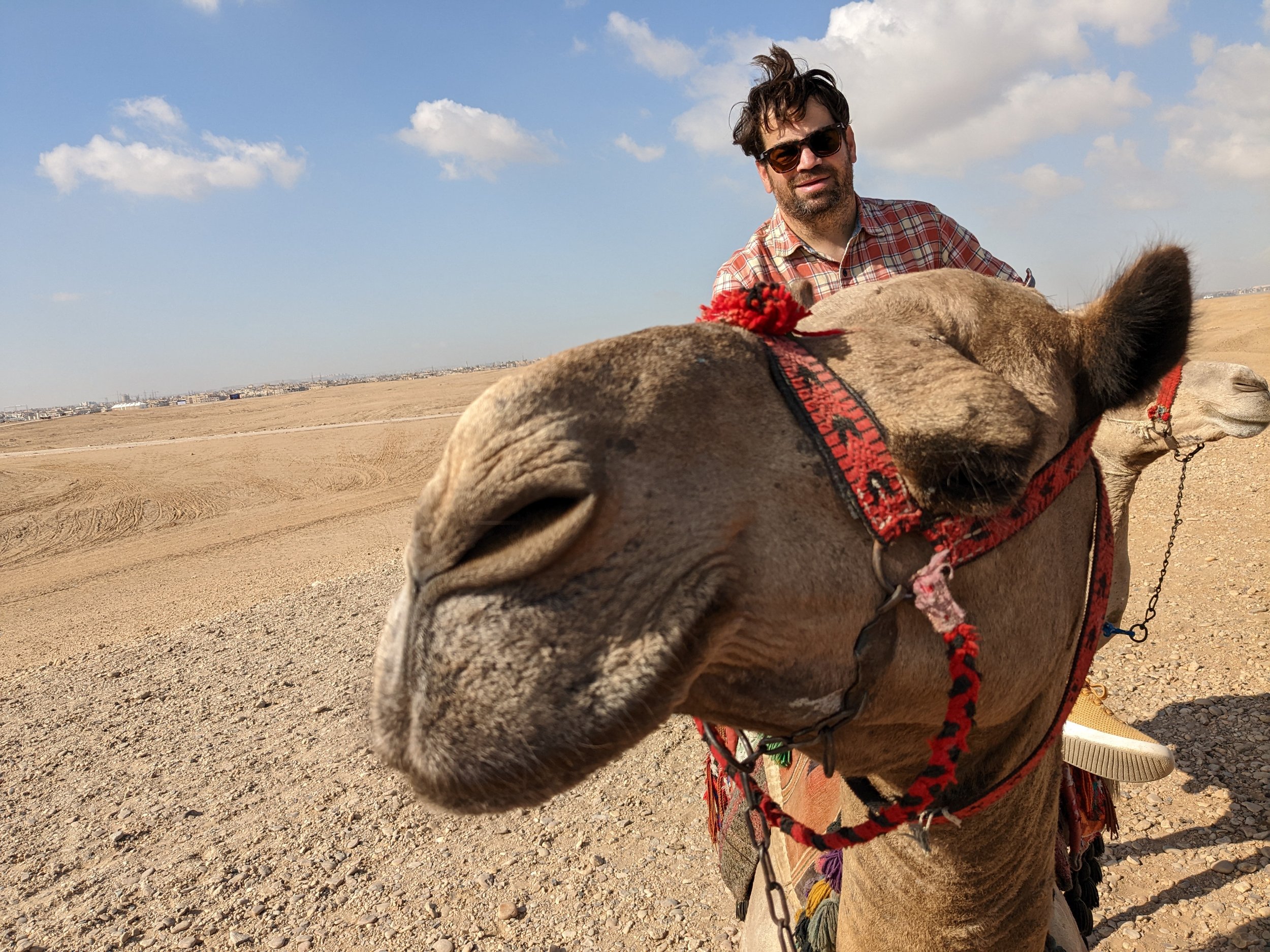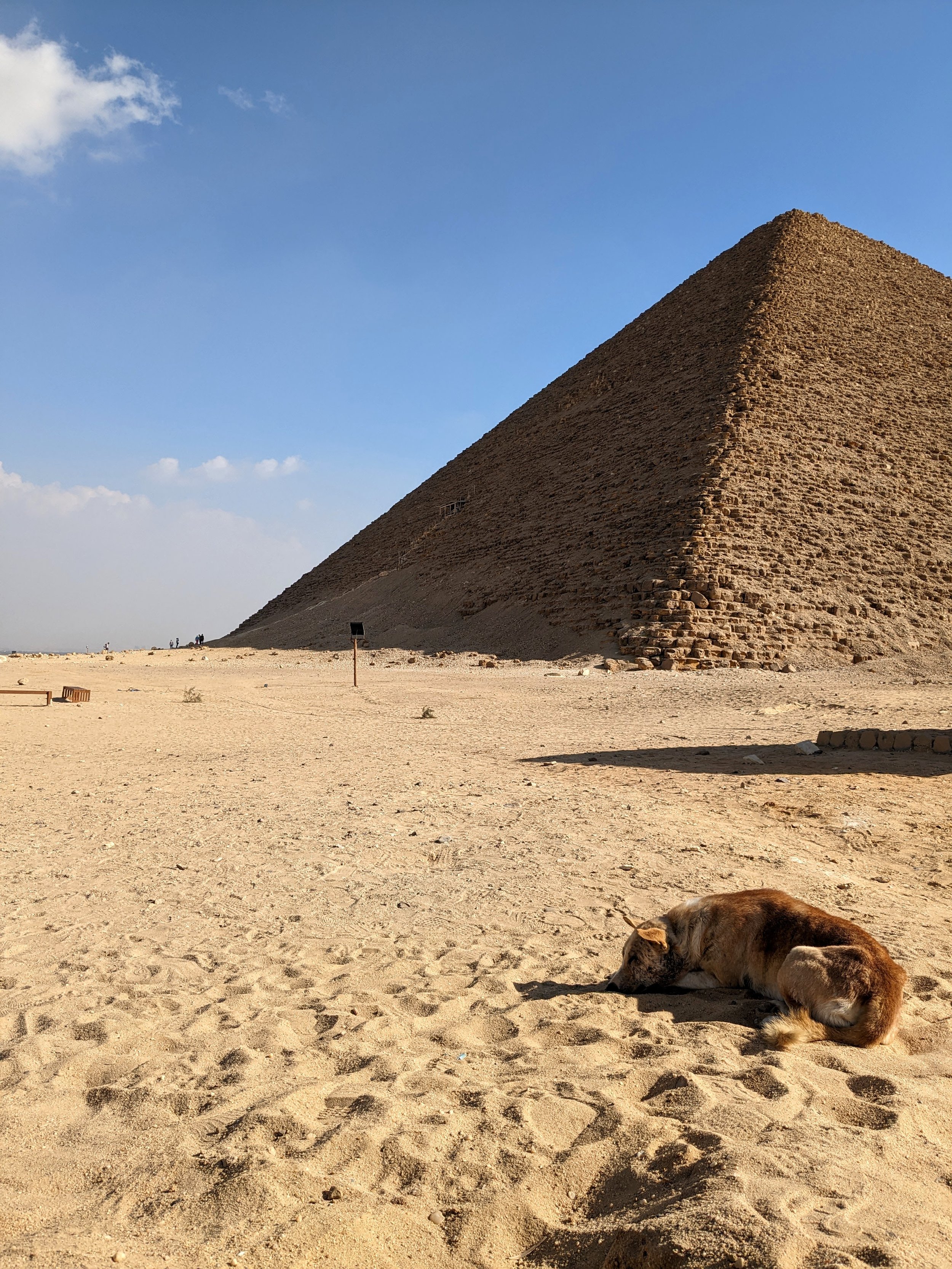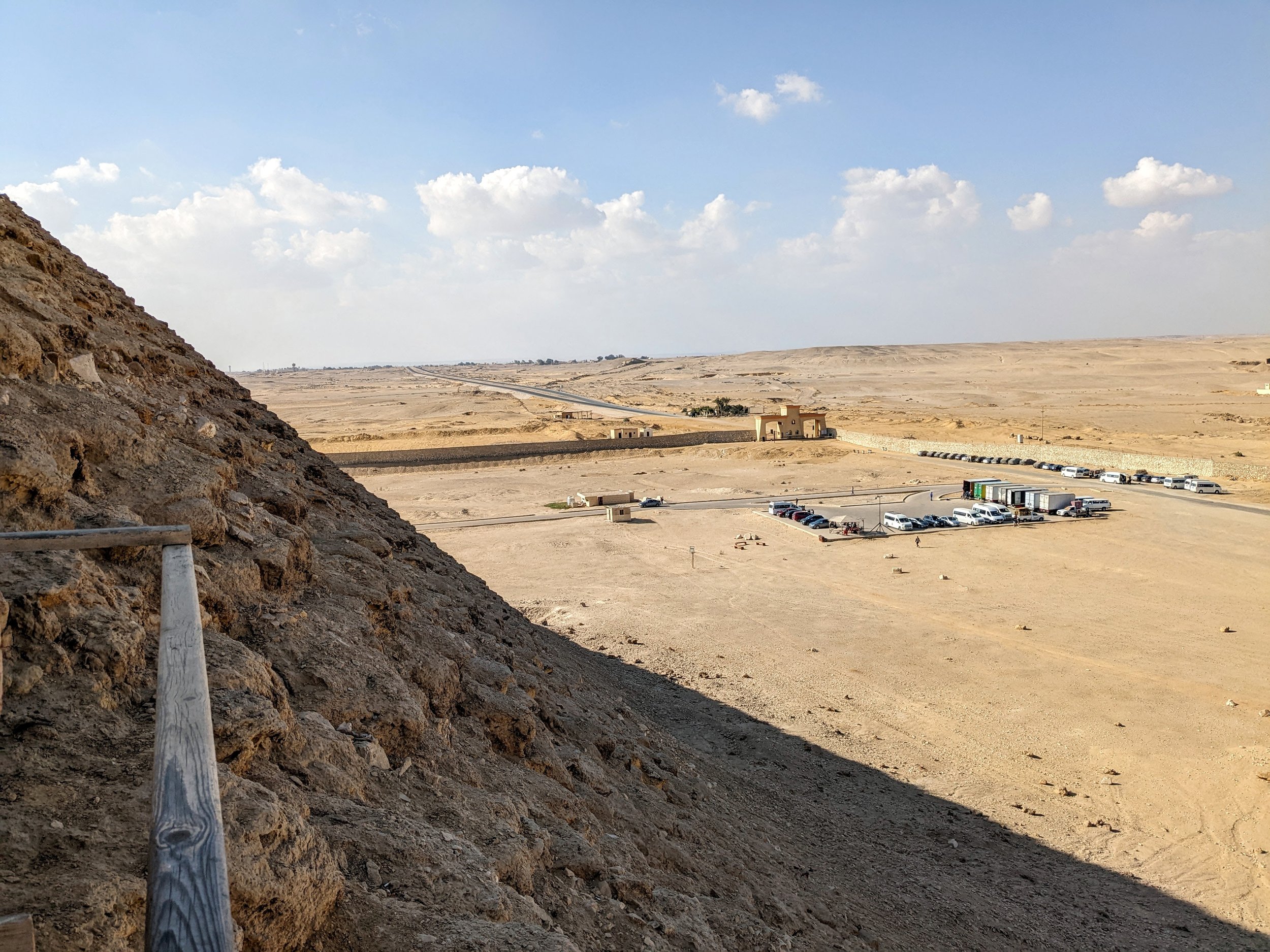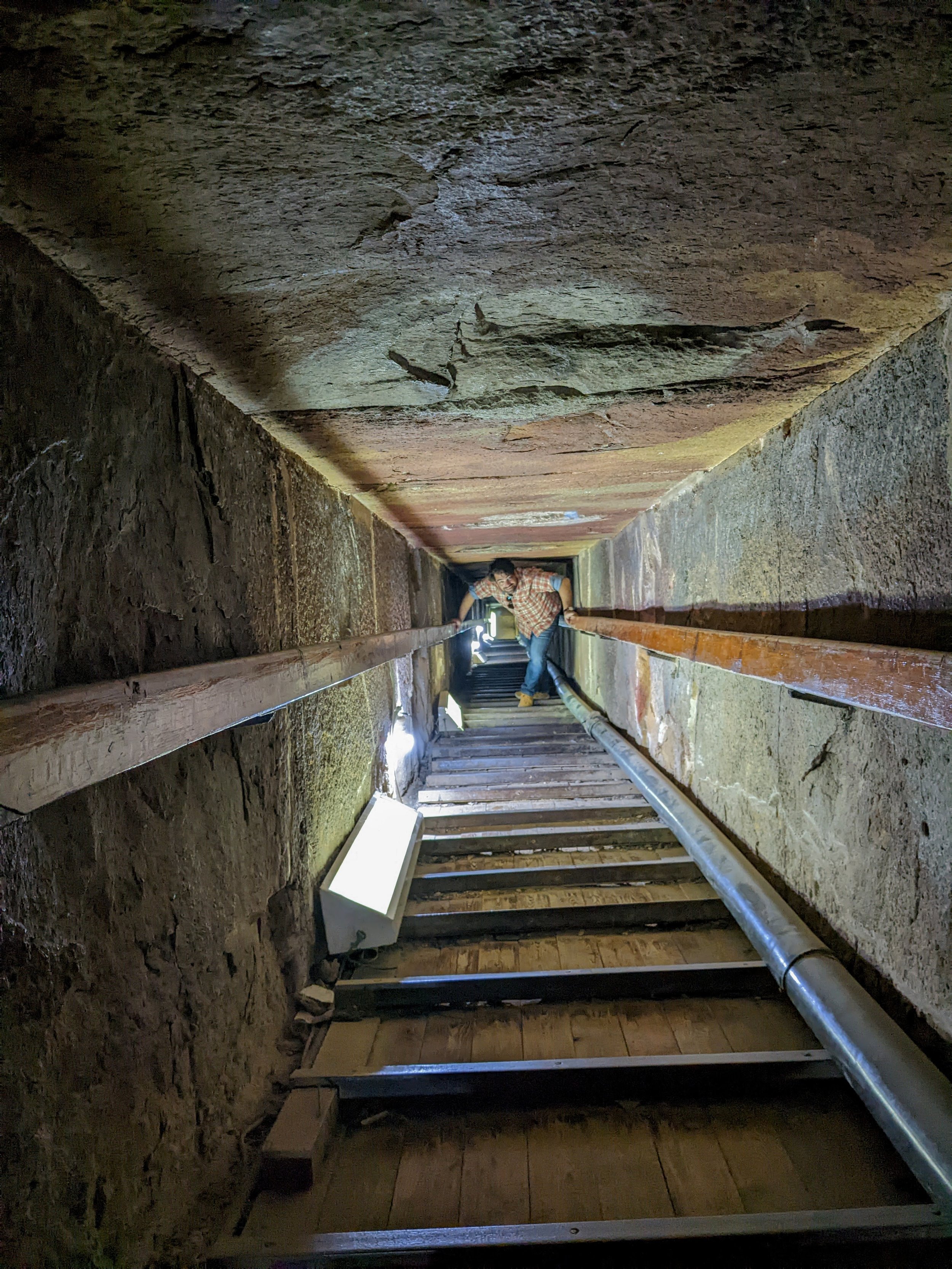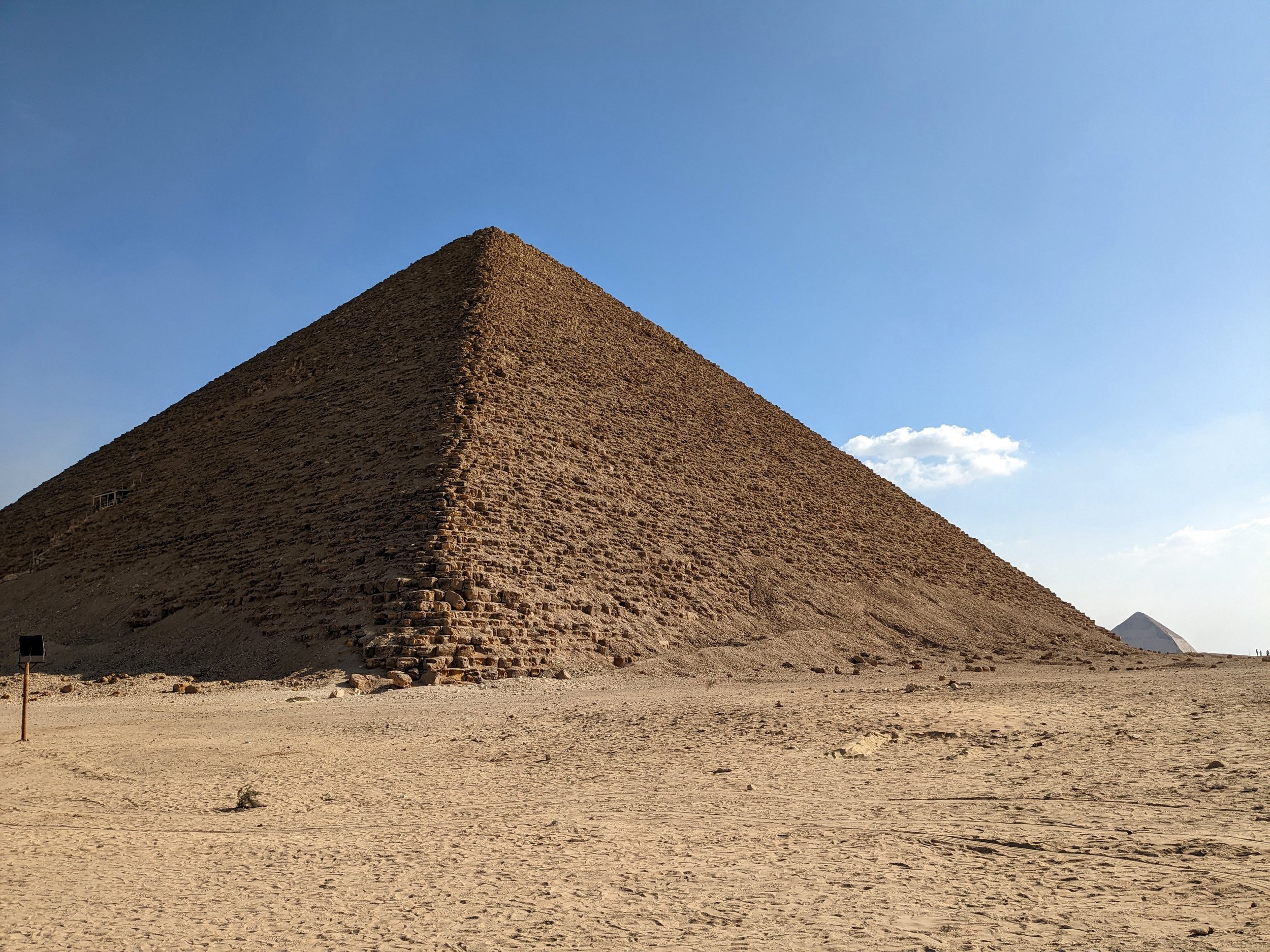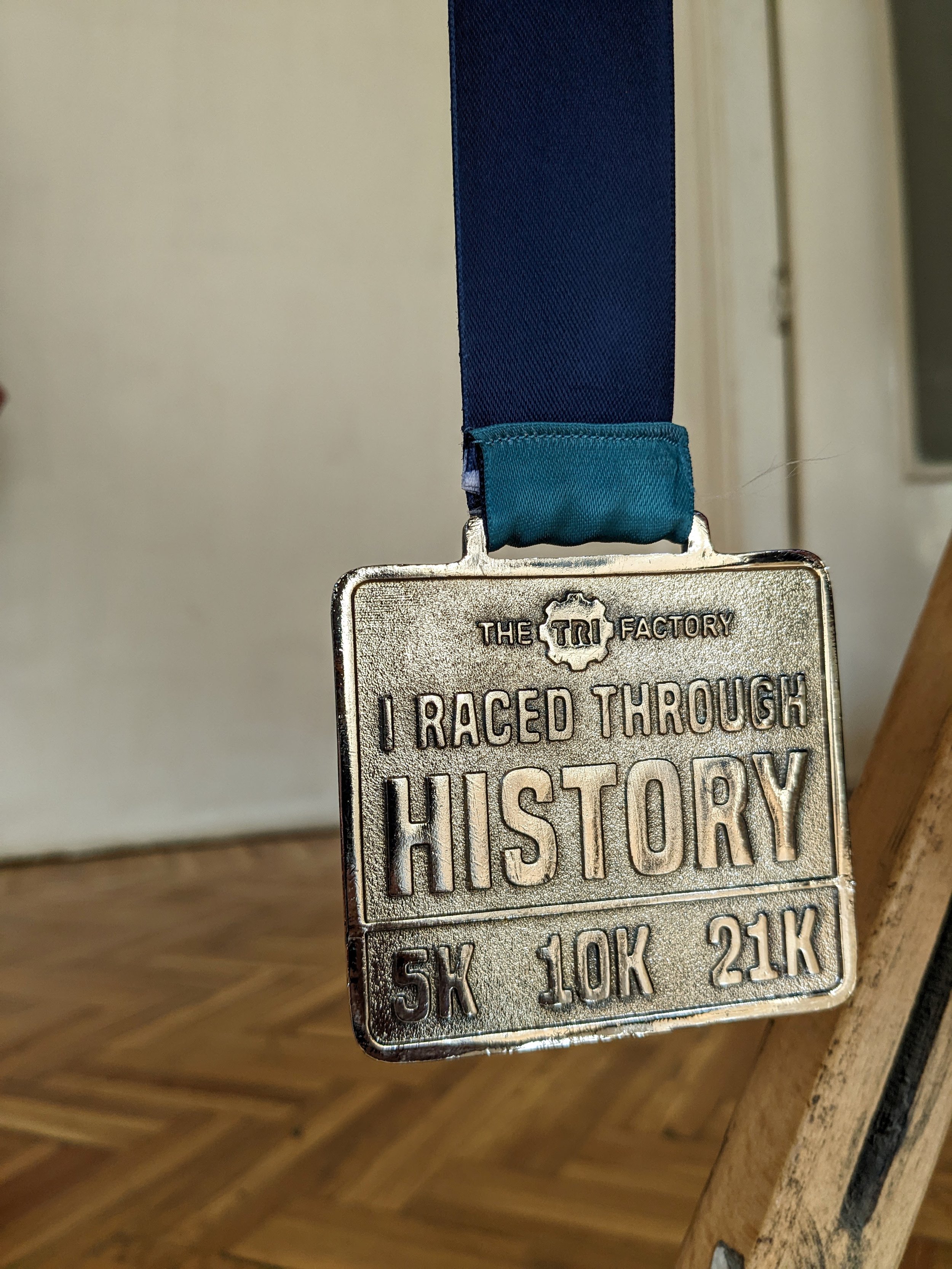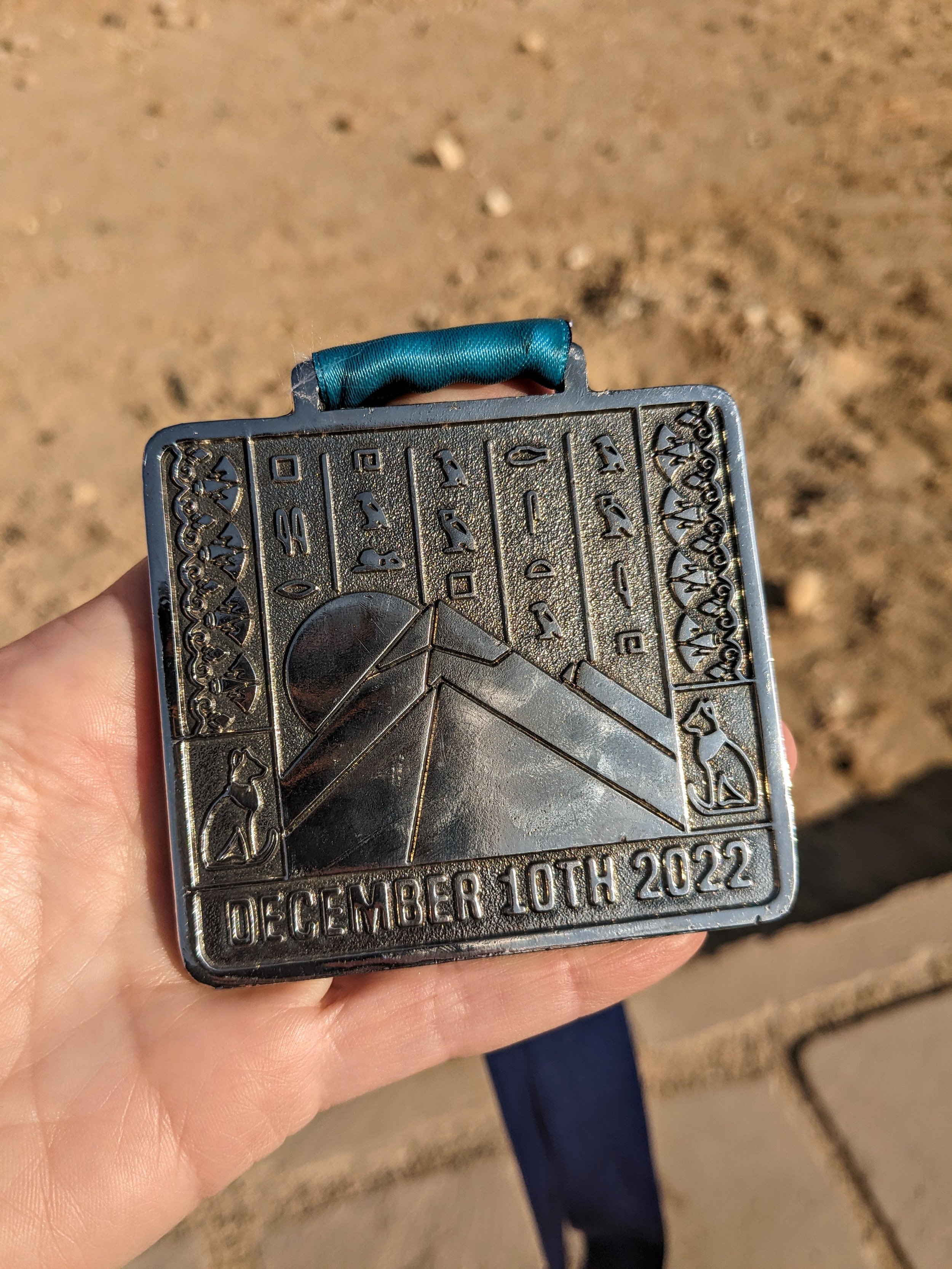pyramid skies, reprise
My dear friend,
On a flight this fall, I found myself seated next to two Egyptians who asked me why I was headed to Cairo. When I told them that my husband was working at the university, they asked what subject he taught.
“History,” I said.
“What kind of history?” they wanted to know.
“American,” I said.
At this, they burst out laughing. “How long does that take?” one of them joked once he’d caught his breath. “About five minutes?”
I was reminded of this conversation earlier today as I lined up with four thousand other runners to complete a race around the five-thousand-year-old pyramids. The event was subtitled “RACE THROUGH HISTORY,” and the enthusiastic announcer reminded us over and over again, in between AC/DC songs blasting from the speakers, that we were about to jog around the only remaining wonders of the ancient world.
I don’t tend to run races, but I’ll take any excuse to visit the pyramids. I never tire of glimpsing them from the highway or the Citadel, from a distance or through a window. Each time that I push through the entry turnstile and round the corner of the ticket office and see them still standing there, they take my breath away.
This is why, when I find out that something is taking place at the pyramids, I usually try to attend. True, I missed the Black Eyed Peas concert (thank goodness, because one of the audience platforms collapsed), but I made it for the international squash tournament! I feel that this proves my commitment to the pyramids, since I don’t have any idea how squash works.
(I’ll admit that I didn’t come away with much more knowledge than I’d had going in. I was too busy gazing at the pyramids and wondering what their pharaohs would make of the elaborate light display that glittered across their ancient stones.)
Two weeks ago, when I heard that the pyramids were hosting an art exhibition, I suggested to C. that we go.
We hit a few road bumps. First, we used the wrong address, which landed us at the more hectic of the two entrances to the Giza Plateau.
The line at the ticket window was more of a knot, the hawkers were closing in with their black cat statuettes and papyrus rolls, the horse carriages were narrowly missing our elbows, and the camels were emitting powerful streams of urine mere inches from our toes.
Then, at the ticket window, the seller tried to pocket C.’s change. Meanwhile, in the bathroom, I confused one knob for another and drenched the front of my jeans in water from the bidet hose. Eventually, by cutting in front of a large, dazed tour group (this is a move we learned from the Egyptians), we made it inside.
As always, we found ourselves overwhelmed by their size and age and fame. We stood for a few seconds to take them in, ignoring the camel-owners, horsecart-drivers, and trinket salesmen. The hawkers are tough because they have to be. When we said we didn’t want a ride, they walked behind us and shouted the names of their camels (Mickey Mouse, Tom Cruise, Bugs Bunny). When we declined to buy a scarf or a necklace or a photo book, they pushed the items closer toward us. (A guide last year had advised us to keep our arms firmly at our sides, since if a salesman manages to get something into your hands, it will be impossible not to buy it.)
When a group of teenage girls began flowing in my direction with their cell phones outstretched, asking for photographs, a policeman strode over to deter them. We thanked him, and he followed us for a few paces to tell us that we could touch the pyramid if we wanted to—he’d allow it. For a price.
We aren’t completely certain why teenage girls want selfies with foreign women, but it’s definitely a phenomenon. This isn’t the first time I’ve been driven out of a park or archeological site by unrelenting (even aggressive!) photo requests.
Eight years ago, surrounded by fans at the pyramids.
Eventually we haggled for a horse-and-carriage with the only cash we had on us: one hundred and forty Egyptian pounds (approximately six dollars). The driver agreed to take us a short distance, which wound up working out well because there wasn’t much art to see (either the installations had already been removed, or the map was inaccurate, or both) and because the horse, named Michael Jordan, was quite flatulent.
At the end of our adventure, we climbed to the top of a Pizza Hut outside the entrance gate because C. had read that the rooftop provided a surprisingly good view of the Giza Plateau. It didn’t matter that our table was dirty or the pizza was undercooked. We were eating lunch overlooking the pyramids and the sphinx! I’d like to think that even if I stayed here for years and years, I still wouldn’t tire of looking at them.
When we returned to Giza a few days later with visitors from the States, we took the touring one step further and paid for a camel ride.
I like the way that camels walk. They never seem to be in a hurry: they take long, slow, swaying steps with an attitude that shows they know they’re doing you a favor. When I asked our guide what camels’ personalities are like, he said they they are smart and loyal and stubborn. If you treat them well, they remember you, you said. But if you treat them poorly, they remember that, too. And they bide their time. Evidently, they’re vengeful.
So I tried to be extra-nice to my camel during the photo shoot.
While the pyramids at Giza are the most famous and the most magnificent, they are far from the only pyramids in Egypt. The first known attempt at a pyramid was the architect Imhotep’s design for King Djoser in 2780 B.C. Up until this point, royals and nobles had been buried in mastabas, rectangular mounds typically built from mud bricks. Imhotep decided to use stone instead and to stack six giant mastabas on top of each other to create what archeologists have dubbed the Step Pyramid in Saqqara.
About a hundred years later, King Sneferu decided to improve on the design of the step pyramid by filling in the steps to make the sides smooth. He made a couple of attempts. Perhaps his most famous is the Bent Pyramid, built around 2600 B.C., so-named because the angle changes partway up. Archaeologists speculate that this is because the original angle was too steep, and as the builders worked their way higher, they began to fear that if they didn’t soften the slope, the structure would collapse.
The architects learned from this project. Sneferu’s Red Pyramid, completed nearby, was more successful because they started with a shallower angle. With the price of the entry ticket, visitors can climb up the side of the Red Pyramid and descend into its interior. It’s hot and musty and dark, and if you don’t go down the steps backward, your muscles ache for days. (C. learned the hard way.) In the distance, the Bent Pyramid looms.
Trying to fit all of the pyramid iterations into one day’s tour does feel a little like a “race through history.” So did the aptly-named 10k. Although my plan was to take a leisurely jog around the complex, stopping for photos along the way, my competitive spirit kicked in as soon as I crossed the starting line. Soon I was dashing forward, lengthening my stride, weaving around other runners, and skipping the water stops because they’d only slow me down. From the hilltop guard towers, the camels peered down with either disdain or amusement.
As strange as it is to imagine what one looks like through the eye of a camel, it is stranger still to think about what the pharaohs would say if they could see us here—thundering in laps around their tombs, pounding across pavement that has been laid over sand, flying past photo zones and tables lined with juice boxes.
The pyramids, as usual, witnessed our sweaty efforts with impassive dignity. “What’s the hurry?” they seemed to say to me. “Slow down. Catch your breath. History is long, and your time here is brief. Just try to enjoy the view.”
Yours—L.


